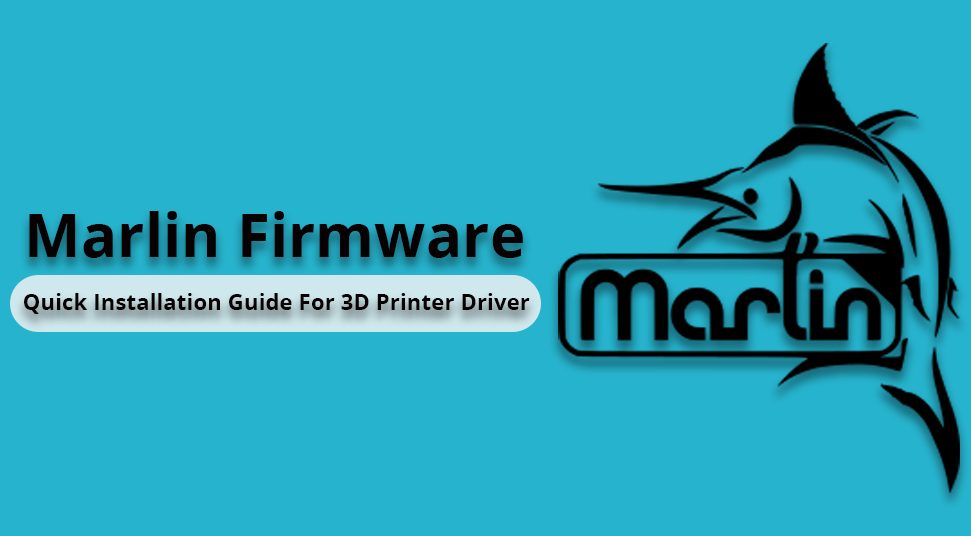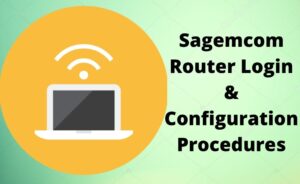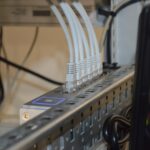Marlin is an opensource freeware software that is designed for projects based on RepRap. It belongs to the family of rapid prototypes, which is essential for configuring the 3D printers.
As it is freeware, you don’t have to pay anything for using its integrated development environment (IDE) for maintaining the workflow of 3D printing.
Here, we will provide you all the necessary information about installing the Marlin firmware. We will also discuss its top features and installation guide of the firmware.
Features of Marlin Firmware
Here are some features of Marlin which you need to know before installing the firmware.
- Fully stuffed with G-code commands with 150 lines of codes
- Includes a G-code movement suite that includes lines, bezier curves, and arcs
- Supports Cartesian products, Delta, Core, and H-Bots kinematics, etc.
- Printing job timer and print counter
- Smart motion system including a lookahead, linear acceleration, and interrupt-based movement
Now we will provide you the steps to install Marlin in your system in the next section.
How to Install Marlin Firmware?
Before downloading the firmware, you need to know the list of source codes and the versions. This will help you to install the correct version. They are as follows.
Merlin Versions and Release Information
- 2.0x: Current release
- 1.1x: Previous release
- 1.0x: Older release
- bugfix-1.1x: “Nightly” build
- bugfix-2.0x: “Nightly” build
- dev- 2.1x: “Nightly” build
Note: Marlin version 1.0 will not support PlatformIO. If you are using older versions then you need to use Arduino IDE. Whereas version 1.1 supports PlatformIO and Marlin 1.1.9 also supports the automated build process.
On the other hand, its version 2.0 and above, support 32-bit ARM architecture. You don’t need PlatformIO in the higher versions.
Installation of Marlin
Before installing Marlin firmware, you need to download and install the Arduino Integrated Development Environment (IDE). So, download it from any secure webpage and install it.
The IDE is easily available for every operating system like Windows, Linux, Macintosh, and Unix.
Your printer device might require to download and install more additional libraries to work with Arduino IDE. Now follow the steps below to install the firmware.
- After downloading the file, extract it from the zip file. You will get a “.ino” extension file. Hence, double-click on the “marlin.ino” and it will open the Arduino IDE.
- When the interface opens, go to “Tools” and select the “Board” menu. From the board menu, select the “Arduino/Genuino Mega or Mega 2560”.
- Now select the USB port on the board, which is already connected in the Tools. Click on the “Tools” and choose the “Port” option.
- After selecting the port, select the “/dev/cu.usbserial-AH060J8F” option.
Now it is time to verify and compile the firmware with the help of this IDE. Click on the “verify” option which is present at the top of the window. This verification process will help you to perform the test and detect the common errors or any type of outdated settings.
After that, apply the board in your desired program if it is necessary. In most cases, you don’t have to upload it. But if you decide to upload it, then click on the “Upload” option.
Thereafter, your IDE board will start flashing blue or green lights continuously. When the blinking stops, it means that the upload is complete and you are all set to use Marlin in your printer for super-smooth 3D printing. Now, you can generate the “.bin” file for future purposes if you want.
Generate the “.bin” File
If you are planning to use the firmware in some other interfaces, then you will need the .bin file. This will allow you to use Marlin in some other IDE as well. The steps to generate the “firmware.bin” are given below.
- Open the Marlin interface and you will see a list of options present sidewise on the top. Select the “Sketch” and click on the “Export compiled Binary”.
- Wait for some time to compile the binary file. After the successful compilation, once again click on the option that is given in the previous point.
- Your Operating System will prompt you and ask for the location where you want to save the file.
- Select your desired location and click on “Save”. After that, back it up to any external HDD, SD card or any other storage device.
You might face problems while using Marlin. However, you need to resolve the issues to continue your work. In the next section, we will discuss a few troubleshooting tips.
How to Troubleshoot Some Common Issues in Marlin?
We will provide you some basic fixes for carrying out the troubleshooting process and work with Marlin.
When you attempt to flash the board where you are installing Marlin, it might show you a “timeout” error. This happens when there is another software connection active on the board. So you need to disconnect or quit the host.
The host might be in the form of PrintRun, Simplify 3D, Repetier Host, and something else. If disconnecting the hosts doesn’t work, then the board of Marlin’s bootloader might be missing from your computer, which helps you to program directly from USB. In this case, reinstall the Bootloader.
Usually, the Arduino interface contains a built-in Bootloader. But, we advise you to download it separately. We also suggest you install the bootloader first and then follow the Marlin installation process which is given above.







